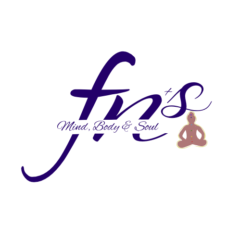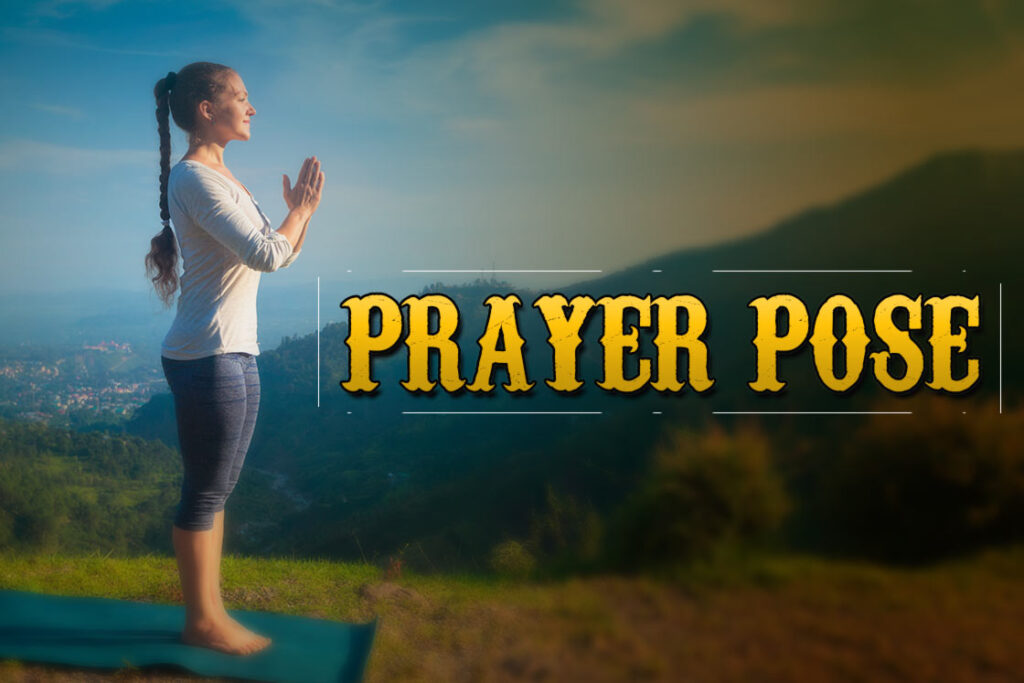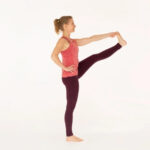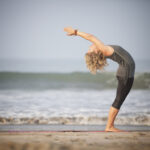Ah, Pranamasana—the yoga world’s equivalent of a polite handshake. Commonly known as the Prayer Pose, it’s the one move that makes you look like you’re on your best behavior, whether you’re about to dive into a full Sun Salutation or just trying to impress your yoga instructor.
In Sanskrit, “Pranamasana” translates to “pay respect pose,” which is basically yoga’s way of saying, “Namaste, I’m ready to rock this mat!”
Simple yet profound, this foundational pose is all about centering yourself, connecting with your inner zen, and maybe sneakily checking if your yoga outfit is still Instagram-ready. Whether you’re standing, sitting, or squatting (yes, it’s that versatile), Pranamasana sets the stage for all the stretchy, bendy goodness that follows.
Let’s dive into the world of Prayer Pose, where spirituality meets squats, and mindfulness gets a dash of muscle tone!
Product Suggestion: Boldfit Yoga Mat
Looking for a yoga mat that screams “Namaste but make it comfy”? This one’s got the looks, the grip, and the softness to pamper your poses—whether you’re mastering Warrior II or just lying in Shavasana pretending to meditate. The cushioning? Chef’s kiss. But hey, treat it kindly, or it might shed a tear (literally). Ready to roll it out? Grab yours here.
Buy Boldfit Yoga Mat
What Is the Purpose of Prayer Pose?
So, what’s the deal with Pranamasana? Is it just a glorified way to fold your hands? Well, not exactly. The Prayer Pose is like the opening act of a blockbuster movie—it sets the vibe and gets you into the zone.
Physically, it works its magic by strengthening your shoulders, toning those thighs, and giving your spine a little love. Whether you’re standing tall, sitting like a yogi, or squatting like you’re debating another slice of pizza, this pose keeps your posture in check and your digestion on point.
But wait, there’s more! On a metaphysical level, Pranamasana is like your spiritual Wi-Fi—it connects you to the universe, your intentions, or whatever higher power you fancy. It’s a chakra-balancing, gratitude-inducing powerhouse that whispers, “Hey, you’ve got this!”
Add it to your Sun Salutation sequence, and it’s not just a pose—it’s a statement. A humble yet confident, “Namaste, world!” before you flow into your day.
Benefits of Prayer Pose
Why bother with Pranamasana, you ask? Oh, just a few tiny perks like mental peace, stronger muscles, and spiritual enlightenment—no big deal, right? Let’s break it down:
1. Mental Peace Like a Pro
Folding your hands and bowing isn’t just polite; it’s a gratitude generator. Think of it as a mood booster, releasing feel-good chemicals like oxytocin and endorphins. The result? A calmer, happier you. Namaste to stress!
2. Muscles of Steel
Who knew clasped hands could be your gym membership? In Sun Salutation, this pose tones your muscles, boosts mobility, and builds endurance. It’s like strength training but with way less grunting.
3. Spiritual Glow-Up
Pranamasana is like the “Dear Universe” letter you didn’t know you needed. Bowing in this pose is symbolic of humility and openness, making it the spiritual warm-up lap for your inner journey.
4. Heart Chakra Happy Hour
When your palms meet at your chest, you’re not just folding your hands—you’re firing up your heart chakra. Cue feelings of love, compassion, and forgiveness. It’s like a free therapy session but cooler.
5. Leg Day Done Right
Regular practice strengthens your legs and lower back. Bonus: It’s great for bone health. Who needs squats when Pranamasana is here to save the day?
6. Thoracic Relaxation 101
Joining your hands might feel simple, but it works wonders for reducing tension in your upper body. Add some mindful breathing, and you’re basically a stress-relief pro.
In short, Pranamasana isn’t just a pose; it’s your shortcut to a happier, healthier, and holistically balanced you. And to think, it all starts with just a little bow.
Instructions: How to Master Pranamasana
Ready to nail Pranamasana and unlock your inner yogi? Follow these steps for a pose that’s more polished than your best Zoom meeting bow.
1. Foot Alignment:
- Stand tall with your feet together, like you’re waiting for a royal audience.
- Make sure your weight is evenly distributed. No slouching—this is Pranamasana, not a Netflix binge!
2. Shoulder Broadening:
- Look straight ahead and roll those shoulders back.
- Channel your inner superhero stance—because you’re about to conquer the world, one bow at a time.
3. Namaskar Posture:
- Bring your palms together in Anjali Mudra (prayer pose) at the center of your chest.
- Feel the energy build as your hands connect. It’s like a power handshake, but with yourself.
4. Head Bowing:
- Lower your chin slightly and close your eyes.
- Take a few deep breaths, as if you’re about to deliver a heartfelt Oscar speech.
5. Breathe With Purpose:
- Inhale deeply and feel your chest rise.
- Exhale slowly, letting go of all your worries. Don’t just breathe—breathe like you mean it.
6. Repeat in Sun Salutation:
- Start and end your Surya Namaskar (Sun Salutation) with Pranamasana.
- This pose is the opener and closer—like bookends to your yoga flow.
Pro Tip:
Keep your focus inward and your posture strong. Imagine you’re radiating energy and gratitude, even if you’re just trying not to wobble.
Now you’re ready to practice Pranamasana like a pro! Sure, it’s “just standing with your hands together,” but when done right, it’s also a moment of pure zen and alignment.
Risk: Little Alert
Pranamasana might look like the friendliest yoga pose on the block, but even this humble gesture isn’t for everyone. While it’s a pose of gratitude, some bodies might just say, “Thanks, but no thanks!” Here’s what you should watch out for:
1. Hernia Alert: If you’ve got a hernia, skip the pose or consult a yoga expert. You don’t want to accidentally turn your bow into a how-did-this-happen moment.
2. Tuberculosis Troubles: Undergoing treatment for TB? Stick to poses that don’t involve much bending or stress, unless cleared by your doctor.
3. Slip Disc or Sciatica Drama: A bowed back might add flair to your practice, but for those with a slip disc or sciatica, it could add discomfort instead. Proceed cautiously or avoid entirely.
4. High Blood Pressure & Heart Issues: Pranamasana’s calm vibes might not be enough to counteract the risks for those with cardiac conditions or high blood pressure. A quick chat with your doctor will keep you in the clear.
Pranamasana is a pose for respect and balance, but it’s also a reminder that yoga isn’t one-size-fits-all. Know your body’s limits, and remember: it’s perfectly okay to bow out when needed!
Precautions: Handle With Care, Not Fear
While Pranamasana may seem as simple as joining your hands and standing tall, even this pose comes with its fine print. To ensure you’re bowing gracefully without any hiccups, here are the golden rules:
1. Wait, Don’t Bend Just Yet: Avoid practicing this pose right after a meal unless you enjoy the sound of your digestion protesting. A two- to three-hour gap keeps things smooth.
2. Sunrise Salutations FTW: Early birds catch the benefits! Practicing during sunrise not only boosts your energy but also channels those Sun Salutation vibes. Can’t wake up early? You’ve got another reason to try.
3. Face the Sun, Literally: The sun doesn’t mind being flattered. Facing it during Pranamasana aligns you with its energy, giving your practice a cosmic upgrade.
4. Get Grounded, Not Groaning: If standing with feet together feels like a test of balance, widen your stance slightly. Yoga is about progress, not perfection.
5. When in Doubt, Modify: Beginners, pros, or anyone feeling a little wobbly—use props like blocks, a wall for support, or even a folded mat. These aren’t cheats; they’re stepping stones.
6. Listen to Your Body: Feeling dizzy or strained? Stop. Yoga is a conversation with your body, not an argument.
Remember: Yoga is about harmony, not heroics. Take these precautions to heart, and you’ll keep your Pranamasana practice safe, smooth, and as graceful as your favorite yoga influencer.
Modifications and Variations: Pranamasana, Your Way
Yoga is a personal journey, and Pranamasana is no exception. Whether you’re a seasoned yogi or someone still trying to touch their toes without groaning, there’s a version of this pose that suits you.
Let’s explore some creative tweaks and variations to make Pranamasana work for you:
Modifications: For Those “Almost There” Days
1. Wall Support: If your back feels more like a question mark than an exclamation point, stand against a wall for support. Great for beginners and those rediscovering their posture.
2. Spread Those Feet: Struggling with balance? Start with a wider stance and gradually bring your feet closer as you build strength.
3. Block Buddy: Use a block between your back and the wall for extra support. It encourages proper alignment and confidence.
Product Recommendation: WiseLife Cork Yoga Block
Need a little boost for your yoga poses? These exercise blocks are like the supportive friend who always has your back (or hips). Lightweight, stable, and ridiculously easy to carry, they’re perfect for leveling up your practice without leveling out your budget. Affordable and reliable—what more could you ask for? Grab yours!
4. Folded Mat: Feeling a bit wobbly or uncomfortable? Add a folded blanket or extra mat under your feet for a firm foundation.
Product Suggestion: House of Handmade™ – Pure Cotton Yoga Mat
Looking for a yoga mat that won’t leave you slipping and sliding? This cotton wonder is thick, sturdy, and slip-resistant—basically, the Rolls Royce of yoga mats (minus the price tag). Comfortable, stylish, and a step up from those rubberized mats, it’s a steal. Find your zen!
Buy House of Handmade™ – Pure Cotton Yoga Mat
5. Eyes Wide Open: If closing your eyes makes you feel like you’re about to topple, keep them open. There’s no rule against admiring your yoga mat pattern.
Variations: Spice Things Up!
1. Eka Pada Pranamasana (One-Legged Prayer Pose):
Channel your inner flamingo!
- Start with feet together and hands by your hips.
- Place one foot on the opposite thigh, knee pointing outward.
- Balance and bring your hands into prayer at your chest. Hold, then switch legs.
2. Urdhva Pranamasana (Upward Salute Pose):
Take your prayer to new heights.
- Stand tall, feet hip-width apart.
- Raise your arms overhead, palms together, and gaze upward.
- Feel the stretch, both physically and spiritually.
3. Paschim Namaskarasana (Reverse Prayer Pose):
A backbend with a twist of elegance.
- Sit in Vajrasana (kneeling) or Sukhasana (cross-legged).
- Reach your hands behind your back, joining palms in a reverse prayer.
- Stay here, breathing deeply for 10 minutes—or until your arms start demanding a break.
Customizing Your Practice
Yoga isn’t a one-size-fits-all journey, so play around with these modifications and variations until you find your perfect fit. Whether you’re balancing like a yogic ninja or just grateful for not toppling over, remember: every adjustment is a step toward mastery.
Pro Tip: Add a smile—it’s the most versatile yoga modification out there!
Risks and Precautions: Handle With Care, Not Fear
While Pranamasana may look like a humble pose, don’t let its simplicity fool you—every yoga asana deserves respect. Even the Prayer Pose can be risky if you ignore your body’s signals or specific health concerns. Here’s how to approach it wisely and safely, because the last thing you want is to turn your peaceful moment into a chiropractic appointment!
Who Should Think Twice?
Before you dive into Pranamasana, consider these cautionary tales:
1. Hernia Heroes: If you’re dealing with a hernia, avoid this pose without professional guidance. You don’t want to add “popped a stitch” to your yoga diary.
2. Tuberculosis Warriors: Those undergoing treatment for tuberculosis should skip this pose for now. Your lungs deserve a rest.
3. Slip Disc and Sciatica Sufferers: If your back has been giving you grief, Pranamasana might aggravate it. Better safe than sorry!
4. Heart and Blood Pressure Concerns: If you’re managing high blood pressure or a heart condition, consult a doctor first. Yoga is about love, not heartbreak—literally.
Precautions: Keep It Safe, Keep It Simple
1. Post-Meal Blues: Avoid practicing Pranamasana right after a heavy meal. Nobody wants to mix yoga and digestion drama. Wait at least 2–3 hours after eating.
2. Rise and Shine: Early birds, rejoice! Practicing this pose at sunrise maximizes its benefits. Plus, it’s a great excuse to skip that late-night Netflix binge.
3. Face the Light: When possible, face the sun while performing this pose. Not only is it symbolically energizing, but it also lets you work on your Vitamin D game.
4. Listen to Your Body: Pain is not gain here. If something feels off, stop. Yoga isn’t a competition—except with yourself.
Pro Tip: Progress Over Perfection
If your body says, “No, thank you,” to certain movements, don’t force it. The essence of yoga lies in respecting your boundaries while gently expanding them over time. Your journey is as individual as your fingerprint, so honor it.
Because the only thing that should bend in yoga is your body—not your better judgment!
Prayer Pose for Beginners: It’s Not About Perfection, It’s About Progress
Alright, newbie yogis, listen up! Pranamasana, or Prayer Pose, might look simple, but we both know it can be a little more challenging than it seems when you’re just starting out.
It’s like trying to meditate with your mind racing at a thousand miles per hour (spoiler alert: it happens). But fear not! With a few beginner-friendly tips, you’ll go from awkwardly swaying to becoming a Pranamasana pro in no time.
Let’s break it down for you in the simplest, non-intimidating way possible.
1. Grab a Yoga Block: Your New Yoga Buddy
- What’s the deal?: If you’re struggling with hand placement or wrist pressure, a yoga block is here to help you out.
- How to do it?: Hold a yoga block between your palms, pressing it gently together as if you were trying to crush it with the power of your hands alone (without actually crushing it, of course). This will help create a more grounded sensation and activate your upper body. Plus, it’ll open up your chest and collarbones like a mini chest expansion.
2. Stretch Your Fingers: Show ‘Em Who’s Boss
- What’s the deal?: We all know yoga is about flexibility—mentally and physically. Start by stretching your fingers outward to help your palms press more evenly.
- How to do it?: Spread your fingers apart as much as you can without going overboard. Imagine you’re trying to touch the sides of the room with your hands. The more you stretch, the more you’ll feel the stretch across your chest and shoulders.
3. Relax Your Palms: Keep It Chill
- What’s the deal?: If your palms are stiff and tense, then you’re defeating the purpose of being all zen. The goal here is relaxation, not tension.
- How to do it?: Allow your palms to relax as much as possible without letting them collapse into a limp noodle. Create a dome-like structure with your folded hands for a more open, engaged position.
4. Start With a Sitting or Squatting Position
- What’s the deal?: Not quite ready to stand tall with perfect posture? That’s okay! You can still reap the benefits of Pranamasana while sitting or squatting.
- How to do it?: Begin in a seated position (like cross-legged or in Sukhasana) or even a low squat. In either case, focus on keeping your back straight, your chest open, and your shoulders relaxed. This will help with digestion, flexibility, and overall comfort—no fancy standing pose required.
5. Standing Position: Baby Steps
- What’s the deal?: Eventually, you’ll want to move into the full standing version of Pranamasana, but it’s all about taking it one step at a time (Rome wasn’t built in a day, right?).
- How to do it?: When you’re ready to stand, keep your feet hip-width apart, bend your knees a little, and gently push your hips toward the floor. Take a deep breath, align your spine, and bring your hands into Anjali Mudra. If you can’t quite balance yet, don’t worry—just take it slow and find your footing.
6. Practice, Practice, Practice
- What’s the deal?: You might feel a little wobbly or like your hands have no idea where to go at first. And that’s fine! Yoga is a journey, not a destination.
- How to do it?: Keep practicing, even if it’s just for a minute or two each day. As you build strength and flexibility, you’ll find your Pranamasana becoming more natural. It’s a process, so give yourself a break (and a pat on the back) for showing up!
Pro Tip: Patience is Your Best Friend
You’re not going to wake up tomorrow and magically nail Pranamasana (though we’d totally be impressed if you did). Start slow, adapt as needed, and remember—it’s about the journey, not the perfect pose.
Keep your expectations realistic, and don’t forget to celebrate those small wins, like when you can finally hold the pose without your feet feeling like they’re in a pressure cooker!
Conclusion: Prayer Pose – Not Just a Quick Bow, but a Path to Progress
And there you have it, folks! Whether you’re folding into the peaceful simplicity of Pranamasana at the start of your yoga practice or wrapping it up at the end, remember that this seemingly simple pose is packed with purpose.
It’s about more than just the hands coming together—it’s about grounding your body, balancing your mind, and even tapping into some cosmic energy (hello, universe!).
So, as you move through your practice, keep in mind that mastering this pose is less about perfection and more about progress. You might waver, you might wobble, but with each breath and each prayer, you’re inching closer to a deeper connection with yourself and the world around you.
Don’t stress if your palms aren’t perfectly aligned or your posture isn’t “Instagram worthy” just yet. Yoga is a journey, and Pranamasana is just the first humble step.
Keep practicing, have fun with it, and remember: no matter how many times you mess it up, you’re still one bow closer to inner peace. Keep calm, pray on, and rock that prayer pose! 🙏
Learn this pose perfectly under our certified yoga trainer. Join our online yoga classes now. Browse More Standing Yogasanas and complete Yogasanas Library.



